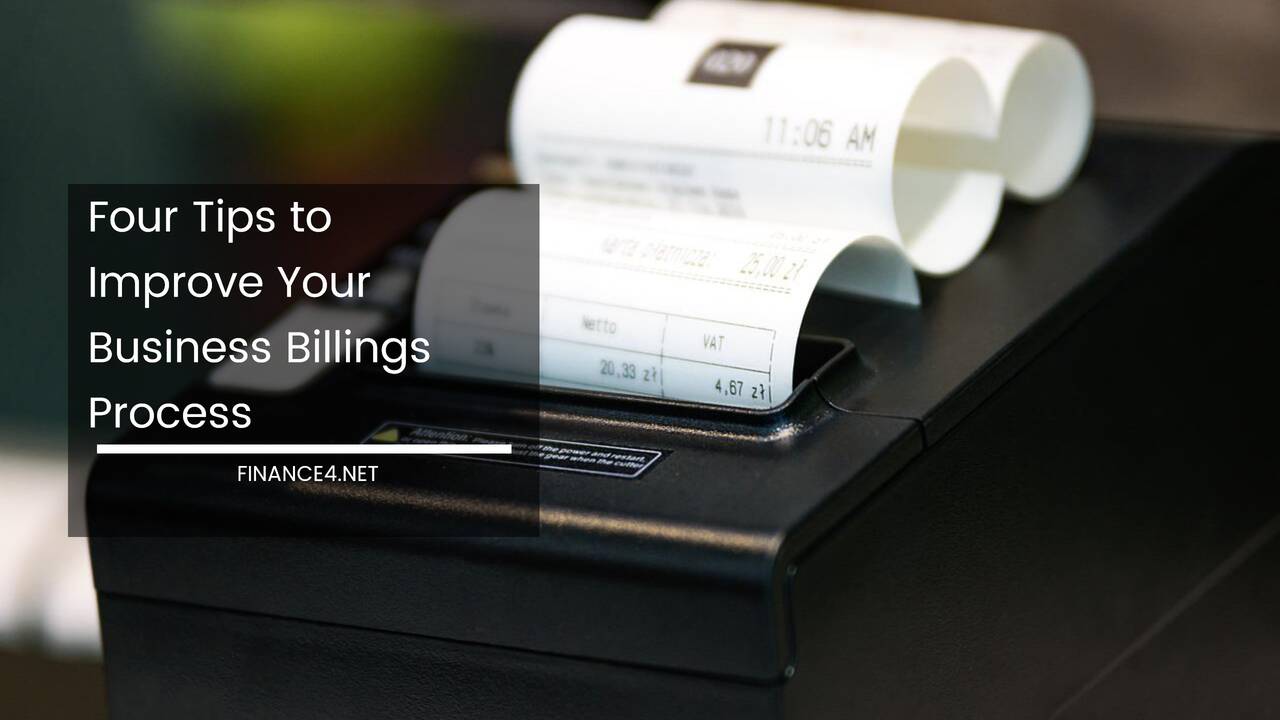Four Tips to Improve Your Business Billings Process

Strengthening Your Business Billing Process: A Comprehensive Guide
Maintaining a smooth cash flow is the lifeblood of any successful business. An efficient billing and collection system acts as the central nervous system, ensuring timely payments, facilitating accurate financial management, and freeing up resources to focus on core operational activities.
This comprehensive guide delves into key strategies to streamline your billing process, optimize collections, and cultivate a financially healthy business environment:
1. Leveraging Technology for Efficiency and Automation:
In today’s digital age, robust billing software is no longer optional; it’s essential.
-
Core functionalities: Ideal software should offer a comprehensive suite of features, including:
- Effortless Invoice Creation and Management: Generate professional invoices with customizable templates that reflect your brand identity.
- Automated Workflows: Automate repetitive tasks like sending invoices, payment reminders, and overdue notices.
- Real-Time Payment Tracking: Gain instant insights into invoice status (paid, pending, overdue) for informed decision-making.
- Seamless Integration: Integrate seamlessly with your existing accounting system to eliminate manual data entry, minimize errors, and save valuable time.
- Advanced Reporting and Analytics: Generate customizable reports to analyze payment trends, identify overdue accounts, track customer payment behavior, and gain valuable insights for future improvements.
-
Choosing the Right Software: Consider factors like:
- Business size and needs: Select software that scales with your business growth and caters to your specific requirements.
- Deployment options: Explore cloud-based solutions for accessibility and ease of use. On-premise solutions might be suitable for businesses with stricter data security needs.
- Budget: Compare pricing models (subscription-based, pay-per-user) to find a cost-effective solution that aligns with your budget.
2. Crafting Customer-Centric Invoices for Clarity and Transparency:
Invoices serve as the primary communication channel with your customers regarding their financial obligations.
-
Prioritize Clarity and Conciseness:
- Ensure a clear and well-organized layout that is easy for customers to understand.
- Include essential details like your company information, customer contact details, unique invoice number, and date of issuance.
-
Transparency is Key:
- Clearly outline the products or services rendered, along with their corresponding unit prices, quantities, and any applicable taxes.
- Highlight the total amount due and payment terms, including the due date and any late payment penalties (outlined beforehand in contracts).
- Offer multiple payment options (online portals, bank transfers, credit cards) for customer convenience.
-
Enhancing the Customer Experience:
- Consider including a brief description of the services rendered, especially for complex projects.
- Offer multiple language options to cater to a broader customer base.
- Provide clear instructions on how to make payments, including links to online payment portals or contact information for alternative payment methods.
3. Implementing a Strategic Follow-Up System for Timely Collections:
Even with clear communication and transparent invoices, late payments can happen. A well-defined follow-up system ensures you address these situations promptly and minimize outstanding balances.
-
Pre-Due Date Reminders:
- Establish a system for automated pre-due date reminders.
- These gentle nudges can be delivered a few days before the invoice is due via email, SMS, or even a personalized message within your customer portal.
- This approach is particularly beneficial for recurring payments or subscription services.
-
Overdue Account Management:
- Develop a tiered follow-up strategy for overdue payments.
- Trigger automated email or SMS reminders after a set grace period (e.g., 5-7 days).
- Subsequent reminders can be delivered at increasing intervals (e.g., 10 days, 15 days) with a more assertive tone, but always maintaining professionalism.
- Consider offering multiple communication channels for overdue accounts, including phone calls to directly address any concerns or roadblocks preventing payment.
-
Dedicated Collections Team:
For businesses with a high volume of transactions, a dedicated collections team can be a valuable asset.
- Team Expertise: Invest in training the team on:
- The intricacies of the billing and collection system, including advanced features of the chosen software.
- Secure payment processing procedures, especially when dealing with phone payments.
- Effective communication strategies to navigate overdue accounts with empathy and professionalism.
- Conflict resolution techniques to address challenging situations while maintaining positive customer relationships.
4. Fostering Open Communication for a Collaborative Approach:
Building trust and fostering a positive relationship with your customers is crucial throughout the billing process.
Contractual Agreements:
- Establish clear payment terms and conditions within contracts or service agreements
- Outline late payment penalties and potential consequences in a transparent manner.
- This upfront communication sets expectations and helps manage potential misunderstandings.
-
Proactive Customer Service:
- Train your customer service representatives to address billing inquiries promptly, efficiently, and courteously.
- Equip them with the knowledge to answer common questions regarding invoices, payment options, and account information.
- Offer multiple channels for customers to reach out (phone, email, online chat) for any billing-related concerns.
- A prompt and helpful response can significantly improve customer satisfaction and foster trust.
Additional Considerations for a Robust Billing Process:
-
Diversifying Payment Options: Cater to customer preferences by offering a variety of payment methods.
- Consider online payment options (credit cards, debit cards, e-wallets), bank transfers, and even check payments for those who prefer traditional methods.
- Offering early payment discounts can incentivize timely settlements and improve cash flow.
-
Prioritizing Security: Implement robust security measures to safeguard sensitive customer financial information.
- Ensure compliance with relevant data privacy regulations like PCI-DSS.
- Utilize secure payment gateways and encrypt sensitive data transmission.
-
Continuous Process Improvement: Regularly evaluate your billing process and identify areas for improvement.
- Gather customer feedback through surveys or direct communication to understand their pain points and preferences.
- Analyze payment trends and identify patterns in late payments.
- Refine your communication strategies, tailor your follow-up approach, and explore the effectiveness of your chosen software to continuously optimize the process.
Final Remarks:
By adopting a strategic approach and continuously refining your billing process, you can achieve significant improvements in several key areas:
- Enhanced Cash Flow: Timely payments ensure a steady inflow of funds, minimizing financial strain and allowing for better financial planning.
- Improved Customer Satisfaction: Clear communication, diverse payment options, and a professional collections approach foster positive customer relationships.
- Streamlined Operations: Automating repetitive tasks and leveraging technology frees up valuable resources for core business activities.
- Data-Driven Decision Making: Utilize reports and analytics to gain insights into customer behavior and identify areas for further improvement.
Investing in a well-defined billing system lays the foundation for a financially healthy business environment. By prioritizing efficiency, transparency, and open communication, you can ensure a smooth flow of revenue, cultivate trusting customer relationships, and pave the way for sustainable business growth.



